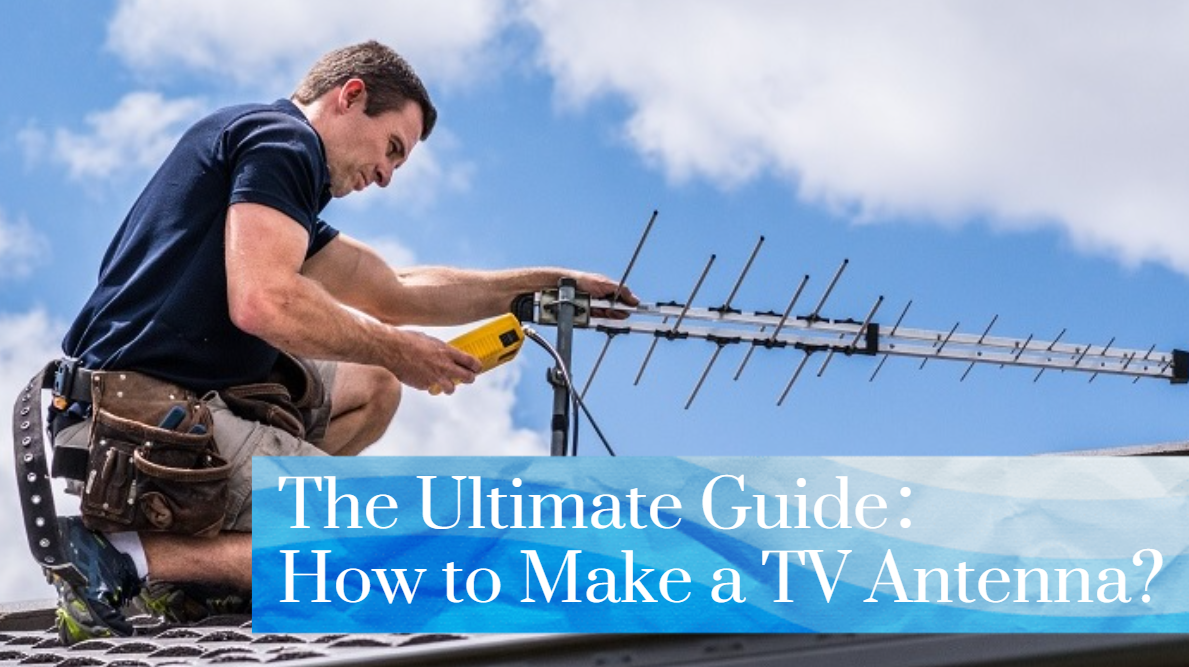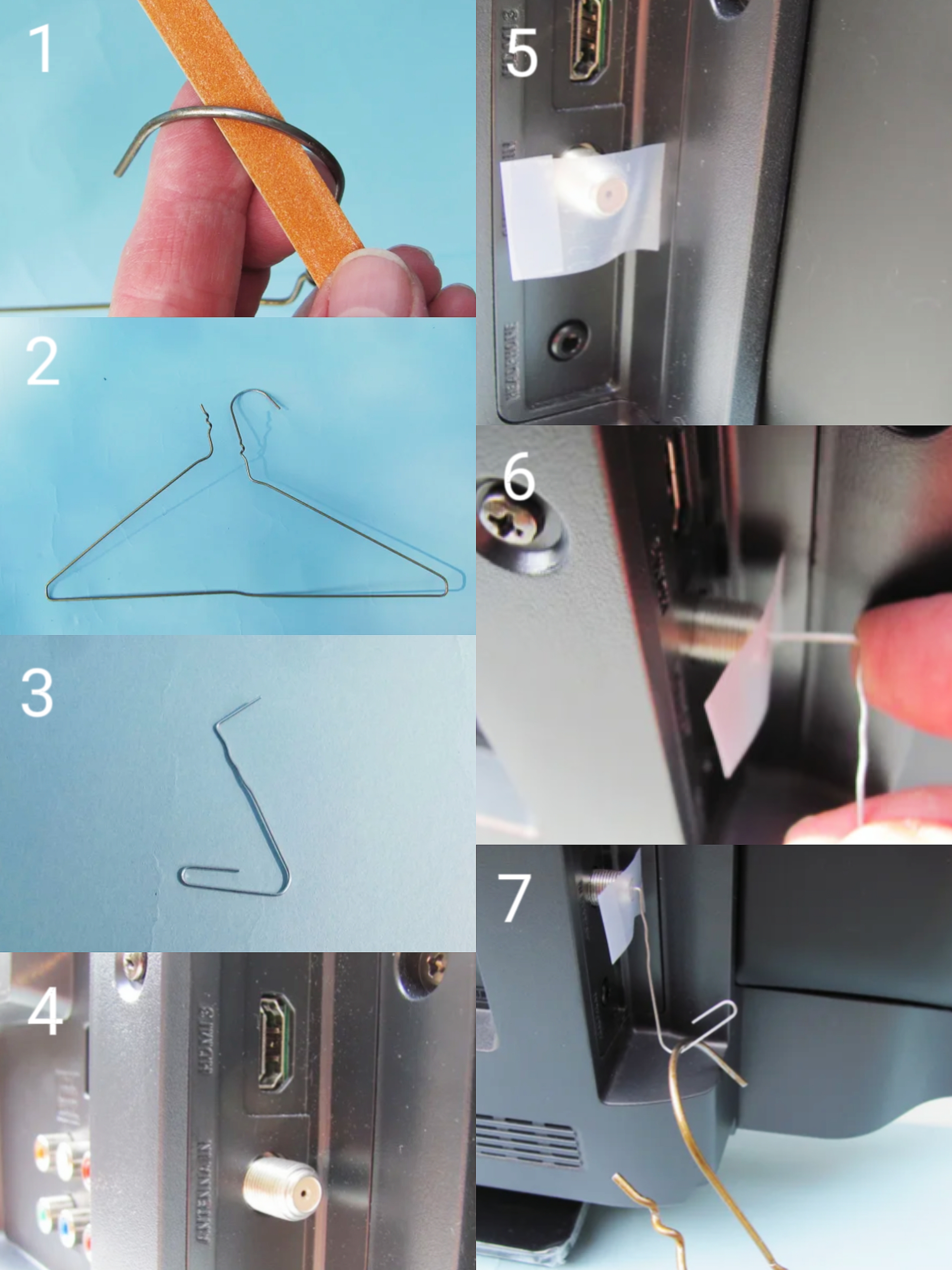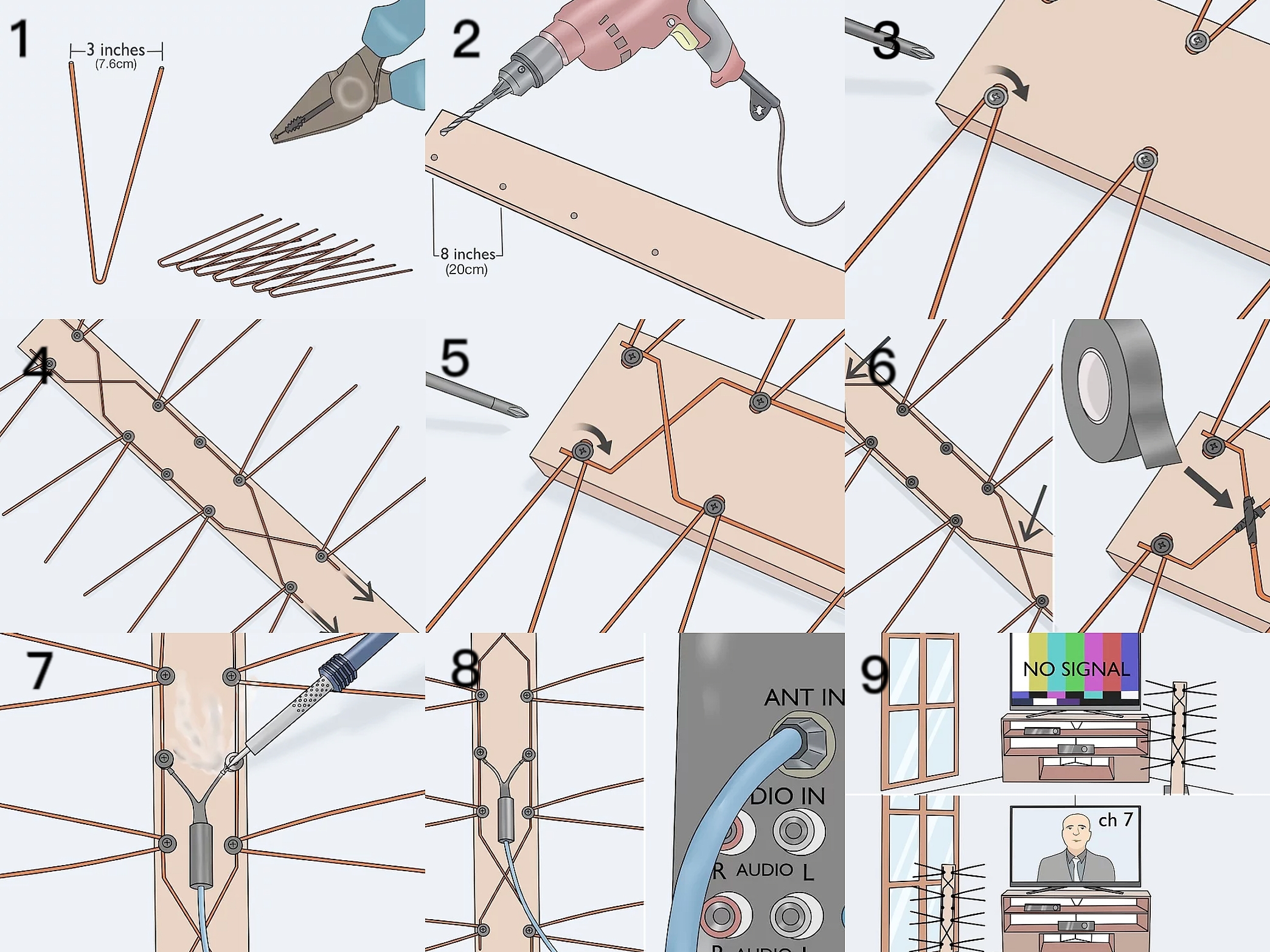
Are you tired of missing out on your favorite
shows?
Are you struggling with expensive monthly TV subscriptions?
If you want to get out of your current predicament, start by making a homemade TV
antenna.
Because a
TV
antenna will help you get free HD channels. Making it yourself may be more
satisfying compared to buying an expensive
TV
antenna.
In this article, we have compiled two TV antenna-DIY guides for you to choose from
for different needs. Reward yourself for watching
HD TV channels with a homemade
TV
antenna, and you'll never miss your favorite shows again.
What Materials
Can be Used to Make a TV Antenna?
The antenna is used to
receive and improve the radio signal of the TV. Instead of
spending a lot of money on antenna products, you can make your own and get the same
results. And your first headache will be selecting a suitable material. Generally
speaking, three kinds of materials are ideal for making a TV antenna: iron, aluminum, and electroceramics.
● Iron: Iron is not the best material for
antennas, but it is cheap and suitable for receiving TV wavelengths. Metal hangers can
be used as iron products to make antennas.
● Aluminum: Lightweight and cheap, aluminum is
one of the best materials for antennas. Aluminum can be used in foil or made into a
stronger mesh. Due to the fact that aluminum oxide forms naturally when exposed to
sunlight, aluminum mesh is frequently used for outdoor antennas.
● Electroceramics: Electroceramics are
specialized forms of conductive materials. They can be used as TV antennas, receiving
wavelengths. But this kind of material is rare in daily life.
6 Steps
to Make a Simple TV Antenna
● Metal hanger
● Sandpaper
● Metal paper clips
● Tape

With the above items ready, you can make a simple TV antenna by following these 6 easy
steps:
1. Remove the coating from the hanger: Most
hangers have a coating on them which can affect signal transmission. Use sandpaper to
rub the surface of the metal hanger hook until you see bare metal.
2. Unhook the hanger: Grasp the hanger's hook
and open the connection. In this way, the hanger becomes a curved iron wire.
3. Locate the coaxial connector and apply tape:
Look on the back of your TV to find the coaxial connector labeled "Antenna In" or
"Cable". Put a piece of tape on the end of the coaxial connector. This is to prevent the
paper clip from shorting the connector.
4. Bend the paper clip and install: Open the
prepared paper clip and bend it like an "S" shape. Bend the short end at a right angle
and push the bent portion into the small hole in the center of the coaxial antenna
connector.
5. Hang the hanger: Hang the unfolded hanger on
a paper clip.
6. Channel Search: Use the TV's auto-tuning
function to scan for channels.
According to the above steps, a simple antenna is ready, and its quality may not be
very good, and it cannot receive too many channels. But in an emergency, it is indeed a
handy substitute.
What If You Want to Make a
HD TV Antenna?
If a simple antenna can't meet your needs, you can also make a high-definition one. Making a
high-definition antenna requires more materials, and
the production process is more complicated, but it will help you search for more clearer
channels.
Let's take a look at the materials needed to make a high-definition antenna:
● 136 inches of uninsulated aluminum wire, two 34-inch
aluminum wires
● Wire cutters, electric drill, 10 screws, 10 metal
washers
● 32-inch plank
● Electrical tape
● Matching transformer, coaxial cable
● Soldering iron

1. Cut 8 aluminum
wires: Use wire cutters to cut 136 inches of uninsulated
aluminum wire into 8 equally spaced individuals.
2. Bend the
aluminum wires into a V shape: Bend all eight aluminum wires
in half and V shapes. Aluminum wire ends 3 inches apart.
3. Drill the
boards: Use a power drill to drill bottomed holes every 8
inches in a 32-inch panel. 10 spots are evenly distributed on both sides of the
board. The diameter of the hole is slightly smaller than the diameter of the screw.
(Make sure the holes on both sides line up with each other)
4. Install the
screws and washers: Align the center of the metal washers with
the holes in the wood and slowly turn the screws into the holes until they snap into
the wood. (Don't fully tighten the screws, as you'll need clearance for the wires)
5. Wrap the
antenna around the screw: Put the bent antenna in turn bottom
under the metal washer. Make sure the bent part of the wire is tightly placed on the
bottom of the screw to keep it from moving. Make the wire opening point outward.
(Don't let the individual antennas touch each other, as this will negatively affect
the signal strength)
6. Thread
aluminum wire through the screws: Wrap the ends of the two aluminum wires
around the top two screws of the board. Cross over to the opposite side after
passing the first screw, then pass straight through the second, third, and fourth
screws. After passing through the fourth screw, cross the two aluminum wires back to
the original side and pass through the last screw.
7. Tighten the
screws: Use a screwdriver to tighten the screws on the wood,
so the washers press down on the wires beneath them and secure the aluminum wire to
the wood. (make sure the aluminum wire is fixed well)
8. Tape where the
wires meet: Tape the two points on the board where the
aluminum wires meet to prevent them from touching each other.
9. Solder the
matching transformer to the crossover point: Place the
matching transformer in the middle of the antenna and bend the ends outward, so they
touch the wires of the phase rod. With your soldering iron heated up, solder the end
of the matching transformer.
10. Connect the
coaxial cable and the matching transformer: Connect the end of
the coaxial cable to the port on the matching transformer and the other end of the
coaxial cable to the port on the back of the TV.
11. Place the
antenna: Place the finished antenna
vertically to get the best signal. Turn on your TV and move the antenna around the
room until you see a clear picture on the TV.
According to the above 11 steps, you will
make an antenna that can search for
high-definition signals. This process is indeed very complicated and requires more
materials. But when you use it to see high-definition programs, you will feel that
everything is worth it.
Conclusion
After reading the above two methods of making antennas, you can try to DIY an antenna anytime. Whichever procedure you choose,
you will have lots of fun and might really
improve your television signals.
Compared to paying a monthly TV subscription fee or buying an expensive antenna, a
homemade antenna requires only a few simple materials. Making a
TV antenna yourself is a great way to save cash and improve your manual
dexterity.
What are you waiting for? Try it now, and you will be surprised.


